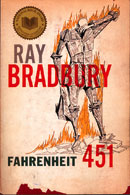Open Access Week 2010 from SPARC on Vimeo.
Don't have time for the whole presentation? Take a peek at this animated short from McGill University.
How else can you celebrate your freedom to read scholarly works, made accessible without payment from you, the reader? Search the Directory of Open Access Journals (DOAJ) and enjoy immediate access to everything found there. Browse the extensive collection of articles at Public Library of Science (PLoS): you are certain to find something remarkable among its seven journals. Even traditional scientific publishers offer a public access option for certain articles, based on contractual agreements with authors and payment of a public access fee by the author(s) or funding agency (e.g., the Author Choice program at American Chemical Society Publications and Springer's Open Choice). PubMed, the public access database incorporating Medline, offers "free full text" as a limiting option in the Advanced Search, and also as a refine option from the search results screen.
 |




